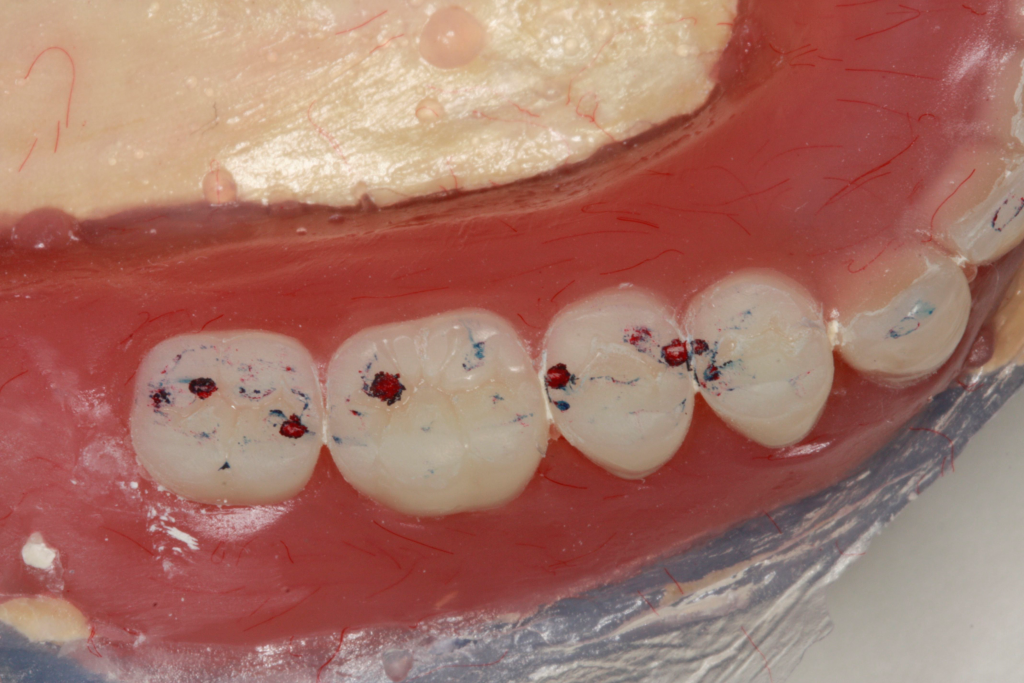Have you ever wondered how your upper and lower teeth come together when you close your mouth? This phenomenon, dental occlusion, plays a vital role in oral health. Dental occlusion, often referred to as your bite, varies from person to person and can change based on various factors like your activities, emotions, and relaxation levels. In this article, we’ll explore the query: what is an occlusion in teeth? What factors determine it, and how does it affect oral health?
What Is An Occlusion In Teeth?
Dental occlusion, or simply occlusion, is the way your upper and lower teeth come into contact when you close your mouth. Think of it as the alignment of your teeth when they meet. This seemingly simple concept has more significance than you might imagine. Your dental occlusion can change depending on your circumstances, such as when you chew, bite into an apple, sleep, or experience emotions like anger or anxiety. Understanding the dynamics of dental occlusion is crucial for maintaining good oral health and discussing any issues that may arise.
Determinants of Dental Occlusion
Several factors contribute to a person’s dental occlusion. One of the primary determinants is the shape and size of their jaws. A person’s jaw size and shape play a pivotal role in how their teeth erupt. For instance, a jaw that is too small or narrow may lead to overcrowded and protruding teeth, while a jaw that is larger than the combined size of the teeth can result in spaced teeth. These jaw-related factors can significantly impact a person’s bite.
The teeth’ size, shape, and overall health also influence dental occlusion. Good oral habits, particularly in childhood, can often help prevent a bad bite. However, some individuals may have inherited or congenital malocclusions that require orthodontic correction. Dental occlusion can also be altered by factors such as trauma, teeth grinding, periodontal disease, and missing teeth. All these elements collectively determine the quality of a person’s bite.
The Impact of Dental Occlusion on Oral Health
Oral health is closely intertwined with the quality of dental occlusion. Well-aligned teeth are aesthetically pleasing and more accessible to clean, which helps prevent issues like plaque buildup, tooth decay, and gum disease. In contrast, a bad bite can lead to several problems, including:
- Difficulty in Cleaning: Crowded teeth can be challenging to clean correctly, increasing the risk of plaque buildup, tooth decay, and gum disease
- Functional Challenges: Severe overbites or underbites can interfere with speaking, breathing, and chewing, impacting a person’s daily life
- Eating Difficulties: Gapped teeth can make eating more challenging, and individuals with such dental issues might also feel self-conscious about their smile
- Facial Aesthetics: Malocclusion can affect the shape and overall appearance of a person’s face, influencing their self-esteem and confidence
Types of Malocclusion and Their Treatment
Orthodontics offers various ways to address misaligned teeth, and the treatment approach depends on the specific type of malocclusion a person has. Here are three common classes of malocclusion and their corresponding treatments:
- Class 1 Malocclusion:
- Description: In class 1 malocclusion, the jaws mostly align with the rest of the skull, but there may be moderate crowding, gaps, or crooked teeth.
- Treatment: Braces are commonly used to treat class 1 malocclusion, as they are a fundamental orthodontic solution
- Class 2 Malocclusion (Overbite):
- Description: A severe overbite occurs when the lower jaw is smaller than the upper one, causing the front teeth to overlap the bottom teeth.
- Treatment: Orthodontic devices like braces are used to realign both jaws. In severe cases, tooth extraction and jaw surgery may be necessary
- Class 3 Malocclusion (Underbite):
- Description: A severe underbite happens when the lower teeth overlap the upper teeth, typically due to a more prominent lower jaw.
- Treatment: Orthodontic devices are employed to reshape either the lower or upper jaw. Severe cases may require surgical intervention as part of the treatment plan
Final Words: What Is An Occlusion In Teeth?
In conclusion, dental occlusion, or how your upper and lower teeth come together, is a fundamental aspect of your oral health. Various factors influence it, including jaw size and shape, tooth health, and external factors like trauma and missing teeth. Understanding the significance of dental occlusion and its impact on oral health is essential for maintaining a healthy and functional smile. If you suspect issues with your bite, consulting with an orthodontist can help you determine the most suitable treatment plan tailored to your unique circumstances. Your oral health and overall well-being are closely tied to the quality of your dental occlusion, so it’s worth taking the necessary steps to ensure it remains in optimal condition.



